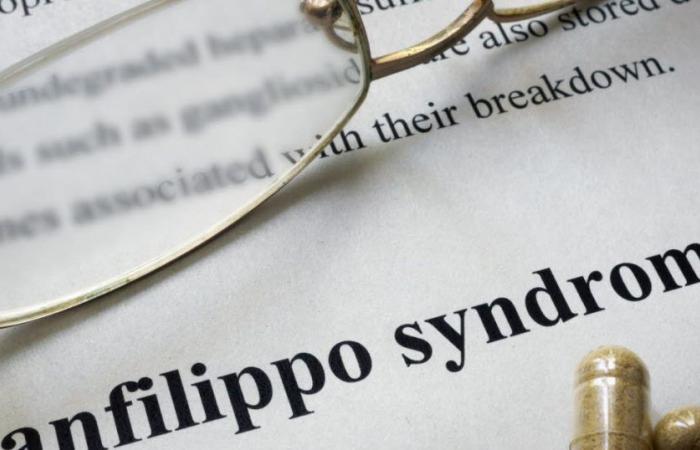Recently, the combat of the parents of Eden and Abel pointed out the spotlight on this rare disease, Sanfilippo’s disease. The latter launched a prize pool to finance the care of their little boys aged 8 and 4 who both suffer from this rare and incurable genetic disease.
To date, more than 1.2 million euros has been harvested, parents are targeting 1.5 million. Objective: launch a clinical trial for gene therapy that could save them. For the time being, a first observational study, known as natural history, has been launched. Prior to the clinical trial of the drug.
What is Sanfilippo’s disease?
It is a lysosomal disease. It is the result of a genetic mutation which affects the activity of an enzyme, contained in lysosomes (tiny components of cells) and necessary for the degradation of heparane sulfate, a polysaccharide naturally present in the extracellular environment.
This is why Sanfilippo’s disease is also called mucopolysaccharidosis type 3 (MPS III). There are 4 subtypes of the disease (A, B, C, D), 4 deficient enzymes that can be at the origin.
The accumulation in the body of the organism of these poorly degraded heparane sulphate molecules generates the disease. They gradually alter the proper functioning of the brain and then destroy neurons. This accumulation is also observed in other parts of the body, such as lungs and bones.
What is the cause of the disease?
The disease is transmitted in an autosomal recessive mode. The anomaly affects the two copies of a gene, each inherited from one of the parents. Each parent of children with the disease have genetic anomaly on a copy of the gene but are not sick.
They are healthy. Each pregnancy, there is a risk of 4 that the child is sick, 1 in 2 that he is healthy, 1 in 4 chance for him to be born without genetic abnormality.
According to Orphanet figures, the prevalence of the disease is estimated at one case in 70,000 births.
When do symptoms appear?
Symptoms depend on the amount of accumulation of mucopolysaccharides and the part of the body where they accumulate.
At birth, there is no manifestation of the disease but as the cells take care of heparane sulfate, the symptoms appear (between 2 and 6 years) and progress quickly. “The first symptoms of the disease associate delay in cognitive development and hyperactivity, autistic behavior and sleep disorders”, specifies the Pasteur Institute.
Symptoms, their severity and evolution vary depending on the severity of the genetic anomaly and therefore the dysfunction of the enzyme (partial or total).
Since we do not have any treatment at this stage, evolution results in a deep intellectual deficit and various physical problems. The child loses his autonomy around the age of 10 and premature death occurs to the adolescent or at the beginning of adulthood.
How is the disease diagnosed?
The disease is often diagnosed late. “The first symptoms (otitis, flowing nose, diarrhea, agitated behavior) are not alarming for doctors”, specifies Orphanet. It is when the engine deficit becomes very visible that this track can be envisaged.
Héparane sulfate is then dosed in the urine. Not degraded, it is present in large quantities. The demonstration of the absence or deficit of one of the 4 enzymes is also sought.
There is no treatments to cure this disease but a multidisciplinary and earliest possible child care can reduce the effects of the disease and improve the quality of life of small patients.








